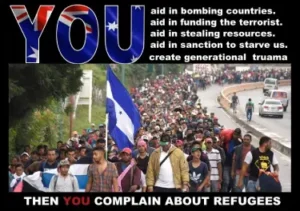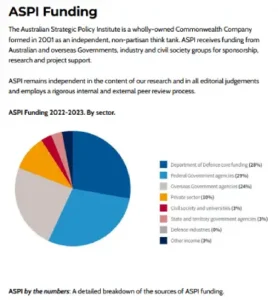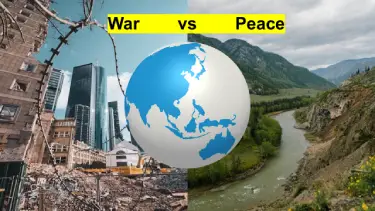Description
Explore the environmental and human costs of war and discover how world peace could transform our planet. Learn more about the benefits of peace and how we can achieve it.
Introduction
War significantly contributes to the destruction of our planet and devastates millions of lives, creating refugees and ravaging communities. Imagine a world where global conflicts are replaced with lasting peace, helping both the environment and humanity. This guide delves into the environmental and human costs of war and explores how world peace could transform our planet.
The Environmental Impact of War
Destruction of Ecosystems
War leads to extensive destruction of ecosystems. Forests are cleared for military bases, and bombings devastate wildlife habitats. For instance, the Vietnam War saw widespread use of Agent Orange, an herbicide that destroyed millions of hectares of forest, leaving behind a legacy of ecological damage.
Resource Depletion
Conflicts consume immense natural resources. Oil, minerals, and other resources are extracted at unsustainable rates to fuel war efforts. This not only depletes these resources but also leads to environmental pollution. The Gulf War, for example, resulted in massive oil spills that polluted marine and coastal environments.
Long-term Damage
Wars leave behind long-term environmental damage. Landmines and unexploded ordnance pose threats to both people and wildlife. Additionally, toxic remnants from chemical weapons contaminate soil and water, causing lasting harm. The aftermath of the Syrian Civil War has left many areas uninhabitable due to such contamination.
The Human Cost of War
Loss of Life
War results in tragic loss of life. Civilians and soldiers alike face death and injury, disrupting families and communities. The Syrian Civil War has caused over 500,000 deaths and left millions injured.
Destruction of Communities
Communities suffer extensive damage during conflicts. Infrastructure such as schools, hospitals, and homes are often destroyed, leaving survivors with limited access to essential services. Rebuilding these structures is costly and time-consuming, hindering post-war recovery.
Health Consequences
War inflicts severe physical and mental health issues. Survivors often suffer from trauma, depression, and other mental health conditions. Veterans may deal with PTSD and other long-term health problems. For instance, studies show that veterans of the Iraq War face higher rates of mental health issues compared to the general population.
Economic Strain
The financial burden of war is immense. Nations involved in prolonged conflicts face economic downturns, increased debt, and reduced investments in social programs. The Afghanistan War has cost the U.S. over $2 trillion, funds that could have been used for education, healthcare, and infrastructure improvements.
The Refugee Crisis
Displacement

War forces millions to flee their homes, creating a global refugee crisis. Displaced individuals often live in precarious conditions with limited access to food, water, and shelter. According to the UNHCR, there were over 82 million forcibly displaced people worldwide in 2020.
Challenges in Host Countries
Host countries face significant challenges in accommodating refugees. Strain on resources, social tensions, and integration issues are common. For example, countries like Lebanon and Jordan have struggled to provide adequate support for the influx of Syrian refugees, leading to overcrowded camps and limited services.
Long-term Impact on Refugees
Refugees often experience long-term challenges, including limited access to education and employment opportunities. This changes their quality of life and hinders their ability to rebuild their lives. Children suffer from disrupted education, affecting their prospects.
The Financial Benefits to the Military Industrial Complex
Profits from War

The military-industrial complex, including defence contractors, arms manufacturers, and related industries, profits immensely from war. Companies like Lockheed Martin, Boeing, and Raytheon generate billions in revenue from government contracts for military equipment and services. These corporations have a personal stake in maintaining and escalating conflicts to ensure continuous demand for their products.
Rebuilding Contracts
Post-war rebuilding offers lucrative opportunities for corporations. Companies involved in reconstruction, such as Halliburton and Bechtel, secure contracts worth billions to rebuild infrastructure in war-torn regions. This cycle of destruction and reconstruction creates a continuous flow of income for these corporations, often at the expense of the affected populations.
Political Influence

The financial power of the military-industrial complex translates into significant political influence. Defence contractors lobby governments to increase military spending and engage in conflicts, shaping foreign policy to help their interests. This relationship perpetuates the war economy and hinders efforts towards lasting peace.
ASPI funded by: Department of Defence(28%), Federal Government agencies (29%), Overseas Government agencies (24%), Private sector (10%), Civil society and universities (3%), State and Territory government agencies 3%), Defence industries (0%), Other income (3%).
Influence over Australian Governments
The military-industrial complex also exerts influence over Australian governments. Defence contractors lobby for increased military spending and strategic alliances, often pushing for participation in international conflicts. This influence can skew national priorities towards militarization rather than social welfare and environmental sustainability.
Diminishing Their Power
1. Transparency and Accountability: Increasing transparency in government contracts and defence spending can reduce the undue influence of the military-industrial complex. Implementing stringent regulations and oversight mechanisms ensures that public money is spent responsibly.
2. Public Awareness and Advocacy: Educating the public about the financial and ethical implications of war profiteering can foster resistance to the military-industrial complex’s influence. Grassroots movements and advocacy campaigns can pressure governments to prioritize peace and sustainability.
3. Investment in Peace Initiatives: Redirecting funds from military expenditure to peacebuilding initiatives can diminish the power of defence contractors. Investing in diplomacy, conflict resolution, and development programs promotes stability and reduces the likelihood of conflicts.
4. Political Reforms: Enacting political reforms that limit the lobbying power of defence contractors can help reduce their influence over government decisions. Campaign finance reforms and lobbying restrictions are essential steps in this direction.
The Benefits of World Peace
Environmental Preservation

World peace would lead to significant environmental benefits. Reduced military activities would mean less deforestation, pollution, and resource depletion. Preserving ecosystems would enhance biodiversity and contribute to climate stability. Peaceful nations can focus on sustainable development and environmental conservation.
Human Welfare
Peaceful societies enjoy better health, education, and economic stability. Resources previously spent on warfare can be redirected towards improving healthcare systems, educational institutions, and social services. This investment leads to a higher quality of life for all citizens.
Global Cooperation
Peace fosters international cooperation. Countries can work together to address global challenges such as climate change, poverty, and pandemics. Enhanced diplomatic relations and collaborative problem-solving create a more stable and prosperous world.
Case Studies
Post-War Reconstruction
Successful post-war reconstruction efforts highlight the potential for recovery and peacebuilding. Germany and Japan, devastated by World War II, have transformed into peaceful, prosperous nations through dedicated rebuilding and international cooperation.
Peaceful Nations
Countries that have avoided major conflicts tend to thrive. For instance, Switzerland’s long-standing neutrality has allowed it to focus on economic development, social welfare, and environmental sustainability, making it one of the world’s most prosperous and stable nations.
Global Initiatives
International organizations play a crucial role in promoting peace. The United Nations, through initiatives like peacekeeping missions and the Sustainable Development Goals (SDGs), works to prevent conflicts and build lasting peace worldwide.
The Path to Peace
Diplomacy and Conflict Resolution
Effective negotiation and mediation strategies are vital for resolving conflicts. Diplomatic efforts can prevent escalation and foster peaceful resolutions. The Good Friday Agreement, which brought peace to Northern Ireland, exemplifies the power of diplomacy in ending long-standing conflicts.
Economic Policies
Investing in development and reducing economic disparities can mitigate conflict causes. Equitable economic policies ensure that all citizens have access to resources and opportunities, reducing tensions and promoting stability. Policies that focus on job creation, education, and healthcare are essential for sustaining peace.
Education and Awareness
Promoting a culture of peace through education and media is crucial. Educating young people about the importance of peace and the consequences of war can create a generation committed to non-violence. Media campaigns and educational programs that highlight stories of peace and reconciliation can change societal attitudes towards conflict.
Summary
War devastates our planet and its people, while peace offers a path to sustainability and prosperity. The environmental and human costs of war are immense, but by fostering global peace, we can protect ecosystems, improve human welfare, and enhance international cooperation. Through diplomacy, fair economic policies, and education, a peaceful future is achievable.
Thought-Provoking Question
How do you envision a world where peace replaces war, and what steps can we take to achieve this vision?
Call to Action
Join the movement for peace! Support initiatives that promote diplomacy, sustainability, and human welfare. Share this article with your contacts and on social media to spread the message.
Social Sharing and Hashtags
Share this article widely to raise awareness about the benefits of world peace and the costs of war.
References
Environmental impact of the Vietnam War: https://digitalrepository.unm.edu/cgi/viewcontent.cgi?article=2568&context=nrj
Resource depletion in the Gulf War: https://core.ac.uk/download/pdf/33898896.pdf
Long-term environmental damage from the Syrian Civil War: https://www.arab-reform.net/publication/the-environmental-impact-of-syrias-conflict-a-preliminary-survey-of-issues/
Human cost of the Syrian Civil War: https://www.unhcr.org/news/announcements/human-cost-syria-crisis-astronomical-world-must-continue-support-people-and
Impact of war on communities: https://www.apa.org/international/united-nations/un-matters/rathi-war.pdf
Health consequences for Iraq War veterans: https://www.ncbi.nlm.nih.gov/books/NBK206865/
Economic cost of the Afghanistan War: https://watson.brown.edu/costsofwar/figures/2021/human-and-budgetary-costs-date-us-war-afghanistan-2001-2022
Global refugee statistics: https://www.unhcr.org/refugee-statistics/
Challenges in host countries for Syrian refugees: https://www.eeas.europa.eu/eeas/situation-syrian-refugees-neighbouring-countries-challenges-opportunities-and-ways-forward_en
Long-term impact on refugee children: https://humanrights.gov.au/our-work/psychological-well-being-child-and-adolescent-refugee-and-asylum-seekers
Environmental benefits of world peace: https://www.visionofhumanity.org/analysing-the-relationship-between-peace-and-environmental-issues/
Human welfare in peaceful societies: https://gfmag.com/data/most-peaceful-countries/
Global cooperation benefits: https://www.machinetranslation.com/blog/benefits-of-globalization
Post-war reconstruction in Germany and Japan: https://www.nationalww2museum.org/war/articles/united-states-occupying-germany-and-japan
Switzerland’s peaceful prosperity: https://www.eda.admin.ch/eda/en/fdfa/foreign-policy/human-rights/peace.html
United Nations peace initiatives: https://www.un.org/en/A4P/
The Good Friday Agreement: https://www.britannica.com/topic/Good-Friday-Agreement
Equitable economic policies for peace: https://www.oxjournal.org/economic-policy-as-tool-for-promoting-peace/
Promoting a culture of peace through education: https://www.grainesdepaix.org/en/resources/peace-dictionary/culture-of-peace-education
Profits from war for the military-industrial complex: https://watson.brown.edu/costsofwar/papers/2021/ProfitsOfWar
Rebuilding contracts post-war: https://www.icij.org/investigations/windfalls-war/us-contractors-reap-windfalls-post-war-reconstruction-0/
Political influence of defence contractors: https://www.opensecrets.org/industries/indus?ind=D
Influence of the military-industrial complex over Australian governments: https://academic.oup.com/jogss/article/8/4/ogad018/7318034?login=false
Strategies to diminish the power of the military-industrial complex: https://jacobin.com/2023/05/military-industrial-complex-pentagon-budget-weapons-manufacturing-influence-revolving-door


I like the theories of peace researcher Franz Jedlicka who argues that the root causes of war lie in a high acceptance of violence already within societies – starting with violence against children in the families (because it is legal). Take a look at his “culture of violence scale 2023”.
Angelica
Hi Angelica, thank you for your comment. I will look into your suggestion. War is also mainly about protecting corporate interests, mainly US corporate interests.
For those interested, here is a link to “Culture of Violence Scale 2023”: https://www.researchgate.net/publication/375029886_The_Culture_of_Violence_Scale_A_tool_for_estimating_the_acceptance_of_violence_in_a_society_-_and_for_setting_priorities_within_the_Triple_Nexus_HDP_Nexus